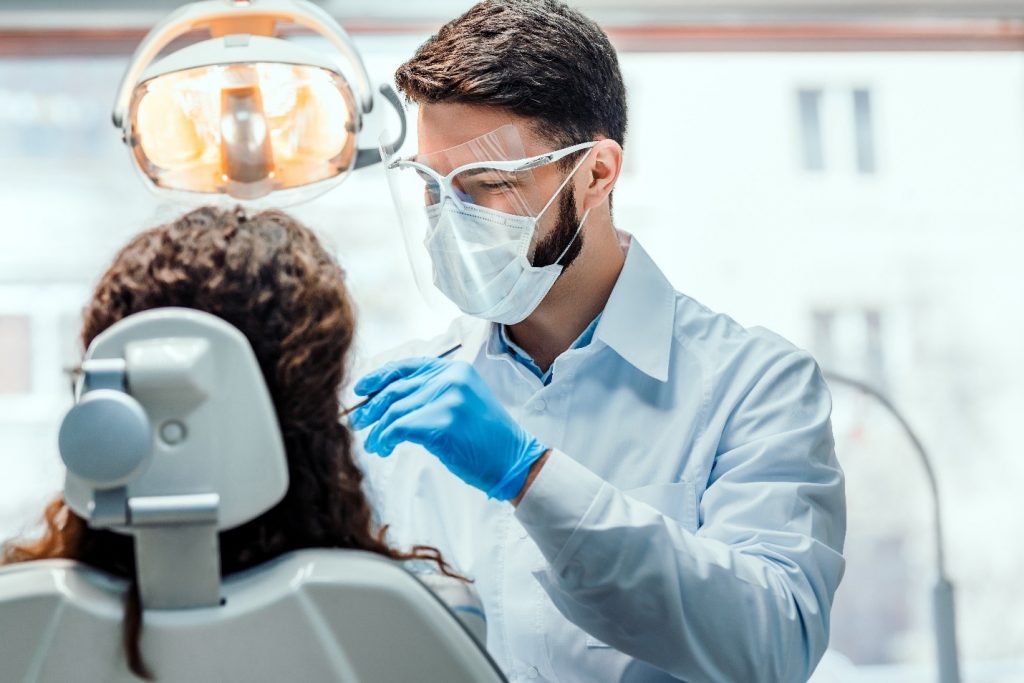
A significant percentage of American adults aged 30 and above have received a diagnosis of gum disease. As symptoms advance, the idea of opting for a tooth extraction to address the issue might cross your mind. While extractions may become necessary in cases of advanced infection, there are crucial considerations to bear in mind beforehand. Explore further to understand when gum disease may warrant a tooth extraction and the importance of seeking early treatment.
What Is Gum Disease?
Gingivitis, the initial phase of gum disease, manifests as an infection in the gum tissue, marked by tenderness and inflammation. The emergence of bleeding gums may indicate progression to a more severe stage known as periodontitis, where bacteria starts to inflict damage on the jawbone, gum tissue, and supporting structures.
When May a Tooth Extraction Be Necessary?
As gingivitis advances into periodontitis, you may experience a sensation of looseness in your teeth, potentially leading to tooth loss or necessitating extraction by your dentist. Extraction is typically recommended to prevent the spread of infection or when the tooth cannot be preserved. Nevertheless, dentists strive to avoid extractions when possible to save time, money, and mitigate complications.
How Can Gum Disease Be Treated?
In the event of one or more tooth extractions, addressing the infection requires treatment such as scaling and root planing. This procedure involves the removal of plaque buildups below the gum line, and a gentle smoothing of the teeth to eliminate areas that may harbor harmful bacteria. Antibiotics may be prescribed in tandem with scaling and root planing to enhance treatment.
By employing a soft tissue laser, infected gum tissue is delicately removed from the tooth root, reducing the size of gum pockets. This process facilitates the healing of diseased gum pockets and promotes the restoration of healthy tissue around the teeth, preventing potential reinfection. Laser dentistry for periodontitis results in a substantial reduction in bacteria within the gum pockets.
For receding gums, a gum graft may be necessary to address increased decay and sensitivity risk. The procedure involves taking tissue from another part of the mouth and attaching it to the receding gums, with detailed postoperative instructions provided.
Gum Disease Prevention
To significantly reduce the risk of gum disease in addition to biannual dental cleanings, adopt the following habits:
- Consume fruits and veggies for teeth cleaning and gum stimulation, such as apples and carrots
- Use mouthwash to eliminate bacteria and food particles from hard-to-reach areas
- Ensure sufficient intake of vitamins C and D through diet or supplements
- Include green or black tea to prevent plaque buildup
- Refrain from smoking and using tobacco products
- Brush teeth for two minutes, twice daily
- Floss daily, preferably after dinner
- Consume alcohol in moderation
Adopt a healthy lifestyle, maintain regular oral hygiene practices, and visit your dentist consistently to minimize the risk of gum disease and tooth loss. Proactive care ensures a grateful smile!
About the Practice
Under the guidance of Dr. Jennifer Pham, Downtown Family Dental of Leesburg boasts a skilled team committed to bringing patients’ dream smiles to life with a combination of dental expertise and artistic vision. Specializing in preventive, cosmetic, and restorative dentistry, they also excel in early detection and treatment of gum disease. For inquiries on gum disease treatment options or to schedule an appointment, visit Downtown Family Dental of Leesburg’s website or call them at (703) 666-3867.
